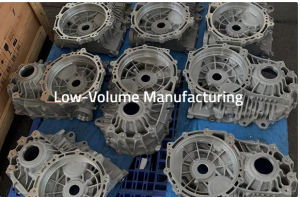Offering a streamlined process of making prototypes for the automotive industry, rapid casting has changed the industry forever. The advantages play a significant role in automotive component development and save a lot of time, they result in the speeding of the auto prototyping process.
Speed and Efficiency
Quick castings: Rapid casting technique significantly reduces the time required to manufacture prototypes. It has taken up to twenty weeks or more to produce just one prototype by traditional casting methods. As opposed to rapid casting that can provide you with a prototype in a few days. This is much faster than the OEM design cycle they are used to, this almost immediate timeline means there are new designs going to market faster than ever.
Cost Reduction
Quick casting saves much cost for clients. Cost: Rapid casting saves up to 50% in prototype production costs by streamlining the casting process and reducing tooling expenses. The cost efficiency allows manufacturers to better distribute their resources and put their resources toward things such as development and innovation.
High Precision and Quality
Quick casting for high precision rapid prototypes with high quality. Our process brings a combination of advanced materials and techniques to meet precise requirements for each prototype. That the automotive industry requires this degree of precision should be apparent; if more power is the goal, than only small variations can be tolerated.
Design Flexibility
One of the biggest benefits of quick casting are its complex configuration. These new shapes and structure that cannot be obtained easily with conventional casting process, allow automotive engineers to experiment with something new. This flexibility promotes creativity and enables further developed and effective automotive parts to be made.

Material Variety
Different materials-aluminum, steel, and many other metals and alloys - are supported by rapid casting. This flexibility gives carmakers carte blanche to choose the best material for their prototypes, as well as maximum performance and durability. In addition, lightweight parts, required for improving fuel efficiency and decreasing emissions in today's vehicles, can be manufactured within a few hours using rapid casting.
Iterative Development
Fast casting required for rapid prototype iterations It enables engineers to test and optimize designs rapidly, creating better final products that are more reliable. The iterative nature of this technique decreases the chances of expensive design mistakes and speeds up the design process in general.
Reduced Waste
The accuracy of rapid casting reduces waste, which can help people save costs and avoid other environmental problems during automotive prototyping. With traditional casting processes an tecFinder error of between 0.5% and 1% needs to be built in to zinc die cast designs to account for inaccuracies and material usage]=] However, rapid casting minimises material wastage and potential environmental impact in the way prototypes are made or created.
Enhanced Collaboration
Quick casting increases cooperation from developers and also with designers and also manufacturers. Higher frequency of communication means shorter feedback loops, that contributes to better alignment of project goals, and ultimately in a better final product due to the speed and flexibility of the process. With how quickly the automotive sector moves... isnt that just how collaboration should work)"
Advantages Of Using 3D Printing Rapid casting For Automotive Prototype Development 3D printing and rapid casting techniques help to make the automotive parts prototyping process more efficient and of much higher quality than it could be decades ago. Automotive manufacturers are able to realize faster development times, cost savings, and higher quality prototypes through the use of Rapid Casting thus aiding in the innovation and efficiency within the industry.